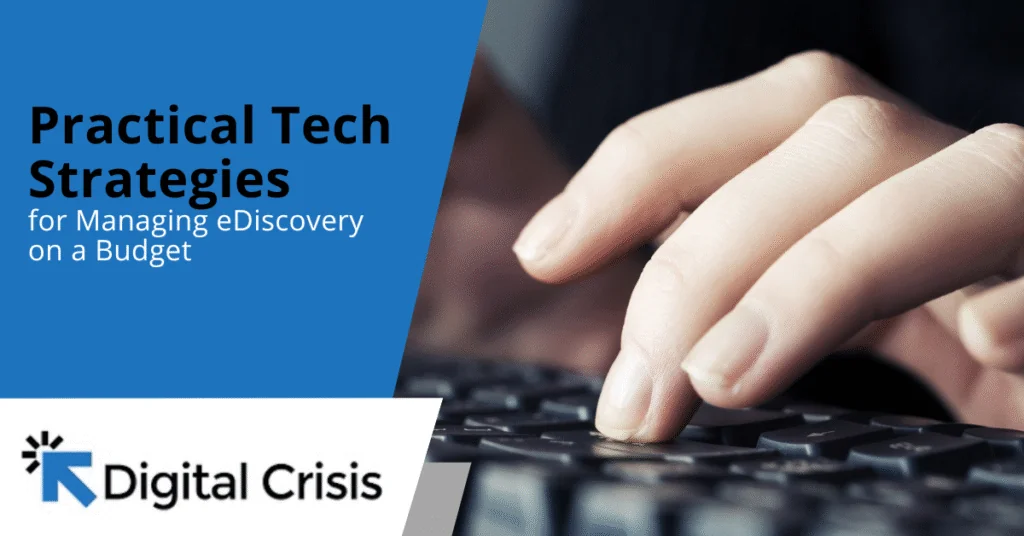Building a Bulletproof Business Continuity Plan: Recovering from Cyberattacks and Natural Disasters
What would happen if a cyberattack shut down your systems or a natural disaster forced your team out of the office? Would your business survive the disruption? With a well-crafted business continuity plan (BCP), the answer can be a confident yes.
Disasters (both digital and natural) can strike without warning, bringing your operations to a halt and threatening your bottom line. That’s why proactive planning isn’t just smart. It’s essential. A solid BCP helps you stay resilient in the face of chaos, protecting your data, your team, and your ability to serve customers.
In this blog post, we’ll show you how to prepare for the worst so your business can keep running, no matter what. From ransomware attacks to power outages, floods to system failures, the right combination of planning, technology, and team readiness can help you stay in control and reduce downtime.
Why Does a Continuity Plan Matter More Than Ever?
It’s tempting to believe a major incident won’t affect your business, especially if you’ve never experienced one before. But data paints a very different and sobering picture:
- Nearly 43% of all cyberattacks are aimed at small businesses.
- The average cost of downtime for small companies is a staggering $8,000 per hour.
- In 2022 alone, natural disasters cost global businesses over $165 billion.
- About 60% of small businesses that suffer a significant data loss shut down within six months.
These numbers drive home a crucial point that no business is too small or too local to be affected. Cyberattacks can compromise your systems and data, damage your reputation, or grind your operations to a halt. Meanwhile, natural disasters like floods, wildfires, hurricanes, and earthquakes can physically destroy your office and equipment, disrupt employee workflows, and leave you scrambling for alternatives.
A strong business continuity plan allows you to react quickly, avoid decision paralysis, and protect what matters most. It reduces chaos during emergencies and gives your team confidence in handling even the most unexpected scenarios.
From Planning to Recovery: Your Business Continuity Blueprint
A business continuity plan isn’t just a dusty binder on a shelf. It should be a living, evolving strategy that’s embedded in your operations and culture. Here are the essential components of a holistic, effective BCP:
Start With a Risk Assessment
No two businesses face the same threats. That’s why a cookie-cutter continuity plan won’t work. Begin with a clear-eyed assessment of what could go wrong in your business context.
Categorize potential risks:
- Cyber threats – ransomware, phishing, malware, data breaches, and DDoS attacks.
- Natural disasters – hurricanes, floods, fires, earthquakes, and severe storms.
- Utility and infrastructure failures – power outages, internet loss, HVAC breakdowns.
- Human error – accidental file deletion, security misconfigurations, or mishandled data.
- Third-party/vendor risks – outages or security issues affecting cloud apps or partners.
Follow this up with a Business Impact Analysis (BIA). Identify your most critical business processes and systems. Ask:
- How long can each process be down before operations grind to a halt?
- What’s the cost of each hour of downtime?
- Are there dependencies tied to specific staff, technologies, or vendors?
Use this information to prioritize which areas need the most urgent continuity planning.
Build a Smart Backup Strategy
Backups are non-negotiable. But too many businesses rely on outdated, manual, or incomplete systems. A smart backup strategy focuses on automation, diversity, and speed.
The 3-2-1 backup rule is still a gold standard:
- 3 total copies of your data (1 primary + 2 backups)
- 2 different types of media (e.g., cloud + external drive)
- 1 backup stored offsite (for disaster resilience)
Additional backup best practices include:
- Automated scheduling – Backups should happen without human intervention (daily or even hourly).
- Immutable storage – Protect backups from modification or deletion by malware.
- Proactive monitoring – Use tools to alert you when backups fail or fall out of sync.
- Regular restore testing – Backups are only useful if they can be restored quickly and fully.
Even the best tools are worthless if they’re not tested. Schedule quarterly restore tests and document the results.
Create an Incident Response Plan (IRP)
When disaster strikes, what happens next? An Incident Response Plan gives your team a playbook to follow, cutting down on confusion and wasted time.
Key IRP elements include:
- Scenario checklists – Tailored responses for different crises (whether it’s a ransomware attack or a gas leak).
- Contact lists – Key personnel, vendors, insurance providers, and emergency services.
- Communications templates – Pre-written messages for employees, customers, and the media.
- Prioritized system lists – Know what needs to be restored first and who’s responsible.
- Access protocols – Safe, secure methods to retrieve critical passwords or authentication tools.
Every employee should know their role during an emergency. Conduct periodic walk-throughs so everyone can act quickly and decisively.
Prep Your People and Processes
Your people are your greatest asset in any crisis. Equip them with the tools, knowledge, and trust to act fast.
Invest in ongoing:
- Cybersecurity awareness training – Teach employees how to spot phishing, avoid bad links, and manage passwords.
- Emergency drills – Simulate real-world incidents. Debrief afterward to gather feedback.
- Remote work policies – Document how employees can access systems securely from home.
- Leadership handoffs – Have clear chains of command, especially in leadership absences.
Communication tools like Slack, Microsoft Teams, or Zoom can help maintain team collaboration during outages. Store your policies in a secure but easily accessible place.
Test Early, Test Often
A business continuity plan that’s never tested is worse than no plan at all-it can create a false sense of security.
Plan to test different aspects of your BCP regularly:
- Tabletop exercises –Walk through emergency scenarios with your leadership team.
- Technical tests – Try restoring systems from backup or simulating a failover.
- Unscheduled drills – See how your team reacts to an unplanned outage.
- Audit and revise – Review performance metrics, identify weak spots, and update accordingly.
Testing should be built into your calendar, not just a once-a-year checkbox. This helps turn planning into practice.
Don’t Forget Vendor Resilience and Insurance
Your business might rely on dozens of third-party tools, platforms, and providers. If any of them go down, so do you.
Strengthen your external partnerships by:
- Asking vendors for their BCPs and SLAs (Service Level Agreements).
- Choosing partners with redundant systems and data centers.
- Using multiple providers for critical services (e.g., dual ISPs or backup cloud storage).
Also, review your cyber liability insurance coverage. Make sure it includes data breach recovery, regulatory compliance, and ransomware response.
Embrace Cloud-Based Continuity Tools
Cloud services are indispensable for modern business continuity. They provide agility, scalability, and reliability you can’t get with legacy systems.
Key cloud tools to integrate:
- Cloud backup platforms – Automatically sync files and databases with secure cloud environments.
- Virtual desktops (VDI) – Let employees access their full desktop securely from anywhere.
- Communication platforms – Stay connected through VoIP, Teams, or Zoom-no matter where you’re working.
- Disaster Recovery as a Service (DRaaS) – Instantly spin up mirrored systems if your servers go offline.
Cloud solutions reduce the need for expensive hardware and shorten recovery timelines significantly.
Document Everything and Keep It Accessible
Even the best continuity plan is useless if no one can find it when disaster hits. Make documentation a top priority:
- Store the BCP in multiple locations (cloud, encrypted drives, printed copies).
- Make critical contact info easy to access-digitally and offline.
- Use plain language that non-technical staff can understand.
- Update documents quarterly or after major tech changes.
Create a quick-start version for emergency access, and a longer master guide with full protocols.
Quick Tips for Strengthening Your Business Continuity Plan
Are looking for a faster way to tighten up your continuity strategy? Here are some simple but powerful tips to help you stay ready:
Keep your plan visible
Don’t let your business continuity plan collect dust in a forgotten folder. Make it easily accessible to leadership and key team members, both online and in printed form. Visibility encourages regular updates and builds familiarity, so when a crisis hits, your team knows exactly where to look and how to respond without wasting precious time.
Use real-world scenarios
Train your team using realistic threats your business could actually face-like a ransomware attack, flood, or extended power outage. These examples create stronger engagement, highlight blind spots, and make response efforts more meaningful. Use past incidents from your industry or region to shape drills and tabletop exercises that simulate real pressure and promote smart, decisive action.
Designate backups for every role
Identify key people for each critical function, then assign reliable backups in case someone is sick, unreachable, or unavailable. Cross-train staff on essential responsibilities so no single point of failure can derail your recovery. This ensures business continuity even when team members are absent, and creates a more agile, adaptable workforce overall.
Test remote logins regularly
Don’t assume remote access will just work. Schedule regular tests to confirm employees can securely log in to systems and apps from outside the office. Check for expired credentials, outdated VPN software, or bandwidth limitations. Verifying remote access in advance prevents last-minute scrambling when weather, illness, or emergencies force your team to work offsite.
Review vendor reliability annually
Your business likely depends on third-party vendors. Think cloud platforms, ISPs, and software providers. Each one should have a solid business continuity plan of their own. Once a year, assess their service level agreements (SLAs), response times, and failover capabilities. If their resilience falters, it might be time to explore backup vendors or more reliable alternatives.
Disruptions (whether from hackers or hurricanes) aren’t a matter of if, but when. That’s why having a solid business continuity plan is so important. It gives you a way to prepare, respond, and bounce back with confidence. When you know your risks, have backups in place, train your team, and use the right tech, you build a safety net that keeps things running.
And here’s the real goal. Not just to survive a crisis, but to come back even stronger. Don’t wait until something goes wrong to realize what’s missing. Start planning, testing, and fine-tuning now. That way, when the unexpected hits, your business won’t just cope. It’ll keep moving forward without skipping a beat.
Ready to Build Your Business Continuity Plan?
Are you looking for an automated and reliable backup solution? Digital Crisis works with only the best cloud-based continuity systems to keep your business protected (whether from hackers, hurricanes, or hard drive failures).
Reach out to us today to get started with a personalized plan that fits your business.














